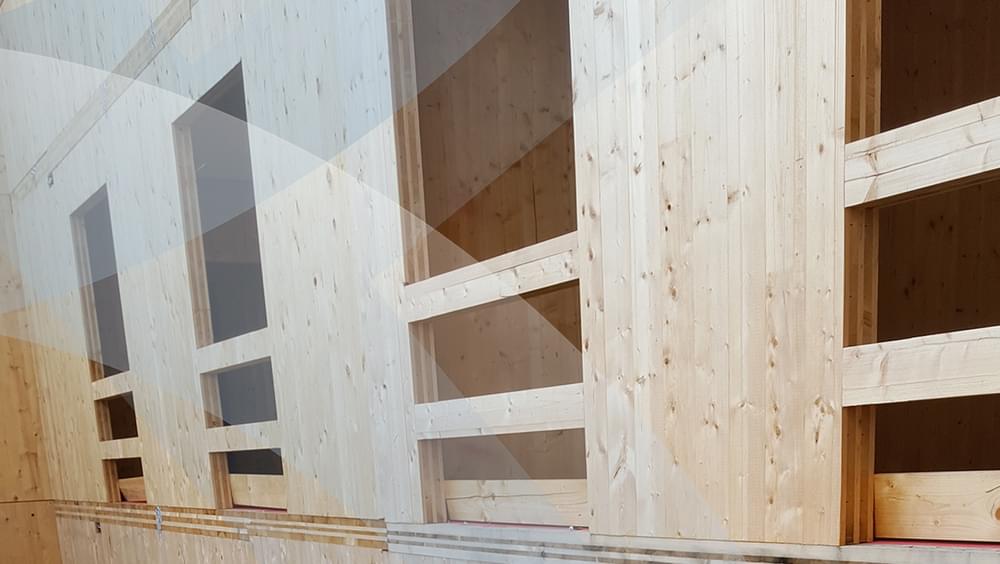Cross Laminated Timber (CLT) is one of the hottest buzzwords in modern construction methods at the moment. CLT is a structural two-way oriented solid wood panel product that can be used for walls, roofs and floor panels and it is changing the world of construction.
CLT first evolved from traditional timber technologies used prolifically across Central Europe and Scandinavia. Further development of the material occurred during the 1990s, particularly in Austria where many buildings were already being constructed from timber and where most of the saw mills are based.
By the early 2000s, CLT manufacturing and construction technologies were sufficiently developed to allow for full scale production. However, issues arose when breaking into the UK construction market due to negative connotations of timber frames and the uncertainty of how it reacts in fire. As further research was carried out in these areas public perception began to change as the benefits and limitations of CLT were further understood.
In 2011 the UK Government’s ‘Free Schools’ programme began a knock on effect that allowed CLT to be picked up on a larger scale across the country. That, along with the green building movement, catapulted CLT to the top of the modern construction vocabulary.
CLT differs significantly from GLT (glued laminated timber), or 'glulam' as it is more commonly known and LVL 'Laminated Veneer Lumber'. CLT is made from gluing together layers of solid softwood sawn lumber (predominantly the species used in spruce) in a symmetric way at 90 degree angles, whereas a GLT panel is made when all laminations are oriented the same way. By rotating the layers of lumber CLT loses the anisotropic quality of regular timber – its physical properties are the same in every direction that force is applied. This not only makes CLT strong and durable, but allows it to be cut into almost any size and shape. This is done in the factory using CNC cutting machines on a production line – it is a well-established form of Offsite Manufacture (OSM).
There are a number of CLT buildings in the UK dating back over the last 10 years from; leisure, education, residential and commercial construction projects. Most recently CLT is beginning to find favour with clients in both the residential and commercial sectors for a number of reasons such as; programme benefits, JIT construction, safe construction, reduction in deliveries, noise and dust reduction, lightweight construction, significant sustainable benefits and all the benefits that offsite construction can provide from more traditional construction methods. Utilising CLT can be cost effective for the projects when adhering to its core design principles, understanding where it is best put to use and as with all OSM – Designing for Manufacture (DFMA).
With sustainability and more efficient building methods at the top of everyone’s agenda, this modern construction method is set to continue growing.
If you want to find out about using CLT in your project, contact Oliver Booth for further information.
More information on our residential sector experience can be found on our website page





